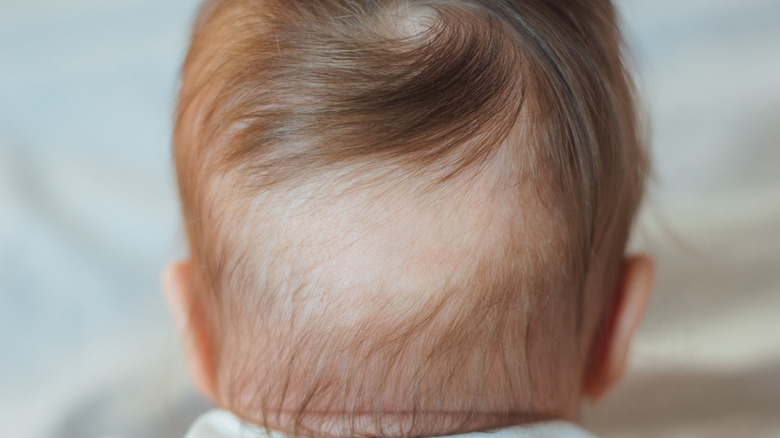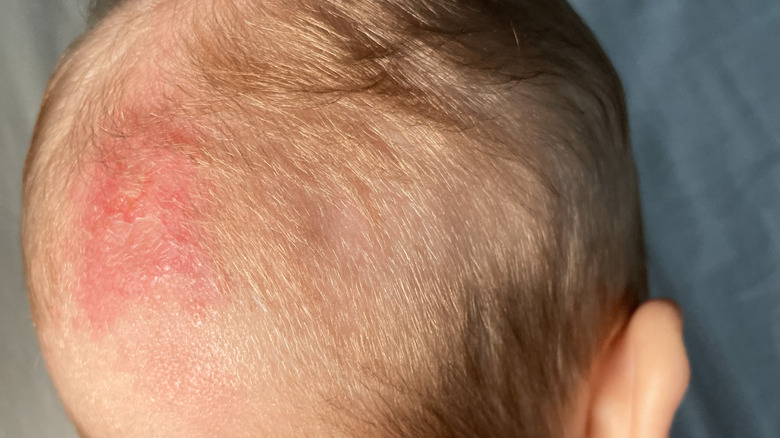What It Really Means When You're Born With A Bald Spot
A bald spot refers to a hairless patch on the head which occurs by birth or happens because of some underlying health conditions. Some patches could be small and harmless while others may be big and worrisome. Bald spots are quite common in the United States, affecting more than six million people, according to Medical News Today. Although most people experience bald spots after entering youth or adulthood, some babies are born with a bald spot, which can be concerning for parents.
Many babies are born with a head full of hair while others may have sparse hair growth; both conditions are normal and nothing to worry about. Genes play a huge role in determining the quantity and color of the baby's hair, although there is no solid way of knowing before birth what kind of hair your baby will have. It's also worth knowing that a lot of infants lose their hair, particularly during their first four to six months, reports Baby Center, mostly when their delicate head rubs against rough surfaces of a crib mattress.
What causes bald spots in babies?
Hair growth begins from hair follicles or cells located just underneath the first skin layer. If there's a problem with hair follicles, there may be difficulty with smooth hair growth. In rare cases, newborns may have a disorder affecting hair follicles called alopecia. It's an autoimmune disease in which the body's immune system turns against the hair follicles, causing extreme hair loss (per Healthy Children). Fungal infections (aka ringworm) in babies may also lead to bald patches. It'll make your baby's skin would look red and scaly, and you may notice them getting uncomfortable with the itching.
Another reason for bald spots in infants could be hormonal imbalance. Interestingly, the baby's hair growth starts during pregnancy when the mother's body is rich in hormones. Web MD explains that the baby's hair follicle patterns begin developing in the mother's womb, particularly in the 14th week of pregnancy and the entire process of facial and head hair growth continues well into the 23rd week. Hence, their hair growth is primarily facilitated by the ample hormone supply from the mother during pregnancy. However, right after birth, the hormone supply stops, causing rapid hair loss and bald spots.


